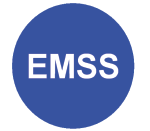3D Printed Model of Human Anatomy for Training Nursing Students: Skeletal, Respiratory and Circulatory Systems
- a Lori Lioce ,
- b Kimberly Budisalich,
- c Marquis Myler,
- d Cooper Gunter,
- e Dietmar Moeller,
- f Gary Maddux
- g Bernard Schroer
- a,b College of Nursing, University of Alabama in Huntsville, Huntsville AL, 35899, USA
- c,d,f Systems Management and Production Center, University of Alabama in Huntsville AL, 35899, USA
- e Institutes of Applied Stochastics and Operations Research, Technical University of Clausthal, Clausthal, Germany
- g Center for Management and Economic Research, University of Alabama in Huntsville, Huntsville AL, 35899, USA
Cite as
Lioce L., Budisalich K., Myler M., Gunter C., Moeller D., Maddux G., Schroer B. (2021). 3D Printed Model of Human Anatomy for Training Nursing Students: Skeletal, Respiratory and Circulatory Systems . Proceedings of the 33rd European Modeling & Simulation Symposium (EMSS 2021), pp. 9-16. DOI: https://doi.org/10.46354/i3m.2021.emss.002
Abstract
This paper presents the development of a full-scale, realistic 3D printed model of the human anatomy for training nursing students using simulation based learning experiences (SBLEs). SBLEs are structured activities that represent actual or potential situations in nursing practice. These activities allow nursing students to develop knowledge and skills to analyze and respond to realistic situations in a simulated environment. The 3D printed model of the human body is currently being integrated into several SBLEs in the College of Nursing at UAH. The 3D printed model of the human body includes rib cage, spine, pelvis, clavicles, scapulas, lungs, trachea, heart and aorta. Various diameters of silicone rubber cord were used to simulate the pulmonary arteries and veins to the lungs. The left subclavian branch and the brachiocephalic trunk were designed using CAD and 3D printed. Assembly issues were many including stiffness of organs causing excessive voids, maintaining full scale organs, fastening organs in correct locations and fusing silicone rubber cord to the 3D printed models. Small sleeves were designed using CAD and 3D printed for connecting the silicone rubber cord and as supports for fusing the PLA.
3D printed models | Human body | Lungs | Heart | Aorta
References
- Alila Medical Media (2021). Medical Illustratiions and Animations. Alila Medical Media, www.alilamedicalmedia.com.
- American Lung Association (2021). How lungs work. American Lung Association, www.lung.org.
- Curiscope (2020). Virtual-Tee bringing learning to life. Curiscope, www.curiscope.com.
- D’Angeles, C. and R. Ryan (2011). Lung weight structure of the respiratory system. Pediatric Critical Care, 4th edition.
- Editorial Team (2018). Aortic arch. Healthline Medical Network, www.healthline.com, Jan 21.
- Fenske, D. (2020). New 3D digital cadaver lab provides access to hundreds of human specimens at the touch of a finger. Academic News, University of Northwestern, St. Paul MN,
- Gokoglan, Y., M. Celik, U. Yukel, H. Kabul, E. Yalcinkaya, B. Bugan, etal (2014). Measurement of pulmonary artery dimensions in patients with ascending aorta aneurysm. American Journal of Cardiology, 113(7), S44, Apr.
- Hager, A., H. Kaemmerer, U. Bernhardt, etal (2002). Diameters of the thoracic aorta throughout life as measured with helical computed tomography. Journal of Thoracic and Cardiovascular Surgery, 123(6), 1060-1066.
- Hawryluk, M. (2020). Virtual dissection table offers real lessons in anatomy. The Bulletin, Central Oregon Media Group LLC, Bend OR, Feb 4.
- Kali, A., C. Alraies and T. Schreiber (2018). Axillary artery: alternative access for large bore interventional procedures. Cardiology Interventions, American College of Cardiology, www.acc.org, Jun 22.
- Kim, Y., etal (2005). Pulmonary vein diameter, cross-sectional area and shape: CT analysis. Radiology, 235(1), 43-49, Apr.
- Limbu, Y., G. Gurung, R. Malla, R. Rajbhandari and S. Regmi (2006). Assessment of carotid artery dimensions by ultrasound in non-smoker healthy adults of both sexes. Nepal Medical College Journal, 8(3), 200-203, www.pubmed.ncbi.nim.nih.gov, Sep.
- Manbachi, A., Y. Hoi, B. Wasserman, E. Lakatta and D. Steinman (2011). On the shape of the common carotid artery with implications for blood velocity profiles. Physiological Measurements, 32(12), 1885-1897.
- Michalski, M., and J. Ross (2014). The shape of things to come. Journal American Medical Association (JAMA), 312(21), 2213-2214, Dec 3.
- Moeller, P.F., L. Lioce and B. Schroer (2015). The power of simulation in training nursing students. Proceedings 8th Annual Inernational Conference of Education, Research and Innovation, Seville Spain, Nov 16-18.
- Mookadem, F., T. Warsame, H. Yang, etal (2011). Effect of positional changes on inferior vena cava size. European Journal of Echcardiolography, 12(4), 322-325, Apr.
- Rigberg, D., and H. Machleder (2006). Subclavian artery: Vascular compression syndromes. Vascular Medicine.
- Saladin, K. (2018). What is the average size of a human heart. Quora, www.quora.com, Aug 23.
- Sheikh, Y., and M. Oliver (2021). Brachiocephalic trunk. Radiopaedia, www.radiopedia.org.
- Sonavane, S., D. Milner, S. Singh, etal (2015). Comprehensive imaging review of superior vena cava. RadioGraphics, published online Oct 9.
- Standing, S., N. Borely, P. Collins, A. Crossman, M. Gatzoulis, G. Healy, etal (2008). Gray’s Anatomy: The Anatomical Basis of Clinical Practice (40th ed), London, Churchill Livingstone, ISBN978-0-8089-2371-8.
- Villa-Forte, A. (2019). Tissues and organs. Merck Manual, www.merckmanuals.com.
- Weerakkody, Y., and F. Gillard (2021). Vertebral artery. Radiopaedia, www.radiopaedia.org.
- Yuen, J. (2020). What is the role of 3D printing in undergraduate anatomy education? A scoping review of current literature and recommendations. Medical Science Educator, 30, 1321-1329.
